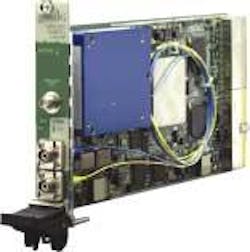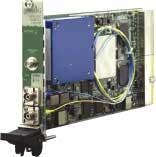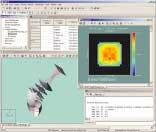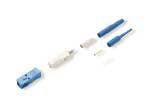Premier Products
For carriers commissioning and turning up new services on multiservice switching platforms, the 10-plus-Gbit/sec multirate EPX6100 transceiver with deep channelization and mixed-payload concatenations is a test module housed inside the scalable multichannel EPX platform. It can function either as a standalone to test the SONET frame section, a line, and one path (or channel) of data or as part of a set of modules to process as many as 192 paths of data simultaneously. The transceiver supports hybrid payloads and independent configuration of the payloads to simulate live traffic and enables complete testing, including bit-error rate, hybrid concatenation, and service disruption switch time. Deep channelization allows simultaneous generating and monitoring all the mapped payloads.
EXFO Electro-Optical Engineering, Quebec City
For enterprise LAN as well as MAN first mile applications, four additional iConverter-managed media-converter modules include advanced fiber-to-fiber Gigabit Ethernet (GbE) to GbE (GX/X), GbE to Fast Ethernet (FE) (GX/F), FE to FE (2Fx), and 10/100 copper (UTP) to fiber (10/100VT), which features bandwidth control for easy network tuning based on need. They support 803.1Q virtual LAN (VLAN) tagging, which enables network segmentation for load-balancing and security, and 802.1p quality of service (QoS) priority, which enables prioritizing data streams based on their real time criticality. The GX/X and 2Fx utilize switch-repeater technology that can be used in network extension by cascading converters with individual segments of up to 80 km and 120 km, respectively; the GX/F can extend the life of existing network equipment; and the 10/100VT enables efficient delivery of data and IP services. Available in 850- and 1310-nm multimode fiber, 1310- and 1550-nm singlemode fiber, and 1310/1550-nm WDM-based single-fiber options, the converter modules support ST, SC, MT-RJ, and LC connectors and feature advanced remote fault detection and isolation features that facilitate remote diagnosis.
Omnitron Systems Technology, Irvine, CA
The optical multiservice metro 16–64 platform allows operators to support increasing levels of data traffic seamlessly alongside existing voice and other services. It is a high-density, full-connectivity service delivery platform as well as a compact high-capacity traffic aggregation and switching device, supporting multiple traffic types such as STM-1 through STM-64, PDH interfaces, and 10/100-Mbit/sec and Gigabit Ethernet. The highly modular platform combines multiple line rate, Ethernet transport/switching, and scalable fully nonblocking crossconnect capability. The dual data and TDM bus architecture futureproofs the platform and allows easy migration to higher-density multiple data services as demand emerges. The platform offers the new ITU-approved data-enabling capabilities—fully standardized generic framing procedure, link capacity adjustment scheme, and virtual concatenation—so carriers can offer variable bandwidth services.
Marconi, London and Barcelona
"One of the most critical steps in fiber termination is scribing," notes product manager Nancy Santana-Pedersen. "If there is a mistake at this step, the contractor must cut the connector off and restart the whole termination process." With that in mind, the company's OptiSmart fiber stub connectors are designed to simplify the installation process for electrical contractors and installers, significantly reducing training and on-the-job time. The connectors terminate in any environment and require no epoxy or primer, meaning less mess and more reliable, high-quality terminations. They are available as multimode and singlemode fiber stub SC- and ST-type connectors that work with 900-µm and 3-mm-jacketed fiber in multiple applications, including terminations in fiber enclosures, workstation outlets (fiber to the desk), distribution frames, and fiber-cable and equipment terminations.
Pass & Seymour/Legrand, Syracuse, NY
The BTT-N-61 three-wavelength burst-mode optical-network terminal transceiver with embedded analog video receiver supports 622 Mbits/sec downstream and 155 Mbits/sec upstream. Successfully completing lab trials with triple play equipment vendors, the passive-optical-network transceiver complies with ITU-T G.983.3 and meets the recent requirements set by the fiber to the premises RFP.
BroadLight, Ramat Gan, Israel






